Mamluk Cairo: An Architectural Panorama
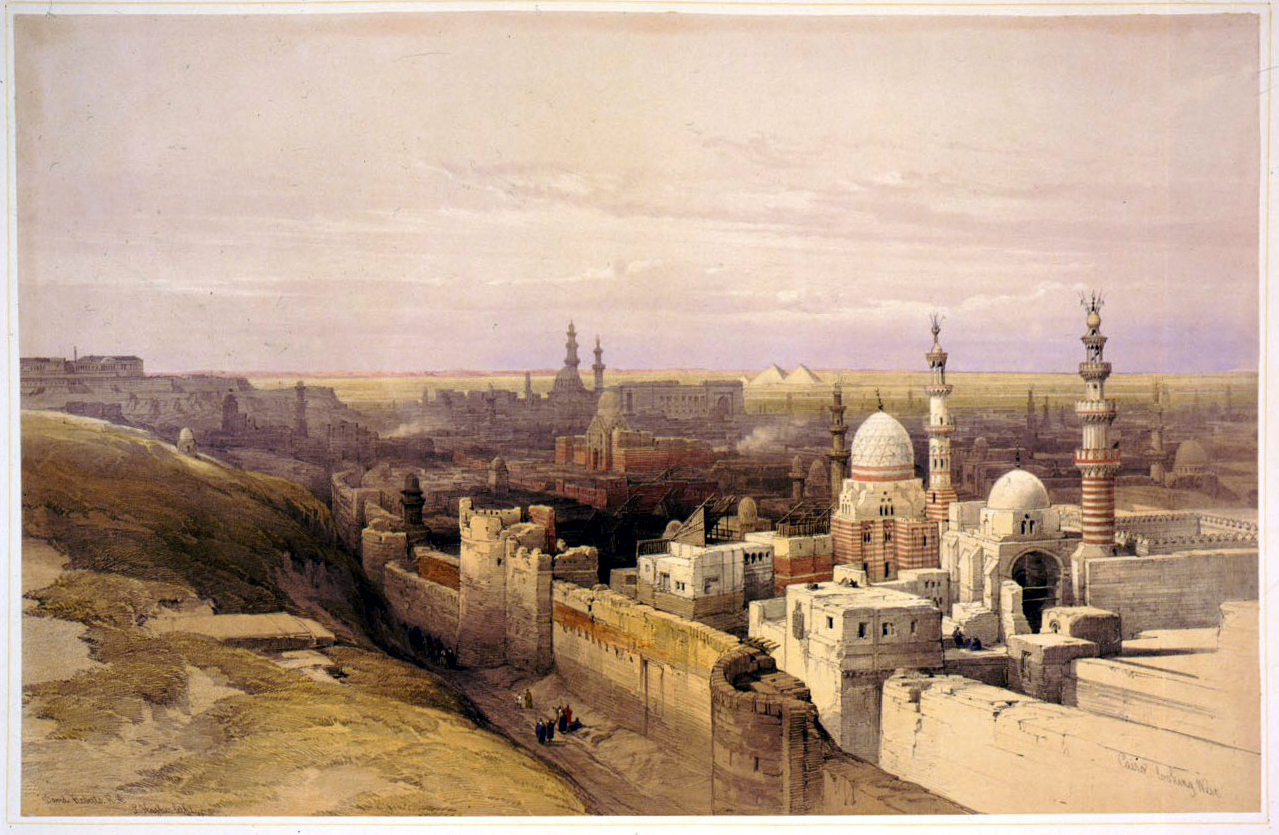
Image: David Roberts 1840
The Mamluk rulers of Egypt and Syria (1250-1517) created in their capital Cairo a remarkable architecture that was stylistically unparalleled elsewhere in the sultanate. This talk will present highlights of this architecture while discussing its urban context, commemorative function and stylistic evolution.
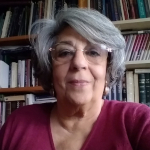 Doris Behrens-Abouseif, is Professor (emerita), SOAS, University of London. From 2000-2014 she held the Nasser D Khalili Chair of Islamic Art and Archaeology at SOAS. Her list of publications covers a wide range of subjects from the early period to the 19th century with focus on Egypt and Syria: history of Islamic architecture and urbanism, cultural history, concepts of aesthetics, material culture and the decorative arts
Doris Behrens-Abouseif, is Professor (emerita), SOAS, University of London. From 2000-2014 she held the Nasser D Khalili Chair of Islamic Art and Archaeology at SOAS. Her list of publications covers a wide range of subjects from the early period to the 19th century with focus on Egypt and Syria: history of Islamic architecture and urbanism, cultural history, concepts of aesthetics, material culture and the decorative arts
January 28, 2022
6:30 - 8:30 PM IST
Registrations Closed
Building the Sultanate: Mamluk Architecture in Bilad al-Sham

Image: Jerusalem by Andrew Shiva (Wikipedia)
In greater Syria, as in Egypt, Mamluk rule had transformative effects on provincial capitals, regional towns and rural settlements. This lecture will survey the building arts and urban developments in Mamluk bilad al-sham, as the region was known historically. It will explore the role of patronage, the transmission of building designs and ornamentation, the use/re-use of special building materials, and the mobility of labor in shaping and re-shaping Syrian towns and cities such as Jerusalem, Damascus, Aleppo, and Tripoli.
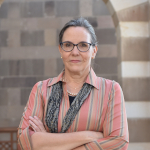 Ellen Kenney is Associate Professor of Islamic Art and Architecture at the American University in Cairo (AUC). She received her Ph.D. from New York University’s Institute of Fine Arts in 2004 and published her dissertation, Power and Patronage in Medieval Syria: The Architecture and Urban Works of Tankiz al-Nasiri,in 2009. Before joining AUC in 2011, she worked as researcher in the Department of Islamic Art at the Metropolitan Museum. Prior to that, she resided and conducted independent scholarship in Yemen; taught courses in Islamic art at NYU, Fordham University, and FIT; and participated in archaeological projects in Jordan. Her research centers on the art and architecture of the medieval eastern Mediterranean and she is currently at work on a book project with the working title A City in Objects: Medieval Damascus and Material Culture.
Ellen Kenney is Associate Professor of Islamic Art and Architecture at the American University in Cairo (AUC). She received her Ph.D. from New York University’s Institute of Fine Arts in 2004 and published her dissertation, Power and Patronage in Medieval Syria: The Architecture and Urban Works of Tankiz al-Nasiri,in 2009. Before joining AUC in 2011, she worked as researcher in the Department of Islamic Art at the Metropolitan Museum. Prior to that, she resided and conducted independent scholarship in Yemen; taught courses in Islamic art at NYU, Fordham University, and FIT; and participated in archaeological projects in Jordan. Her research centers on the art and architecture of the medieval eastern Mediterranean and she is currently at work on a book project with the working title A City in Objects: Medieval Damascus and Material Culture.
February 3, 2022
6:30 - 8:30 PM IST
Registrations Closed
Ports and shores in an age of sultanates: tracing the structures of western Indian Ocean trade, 1250–1500.
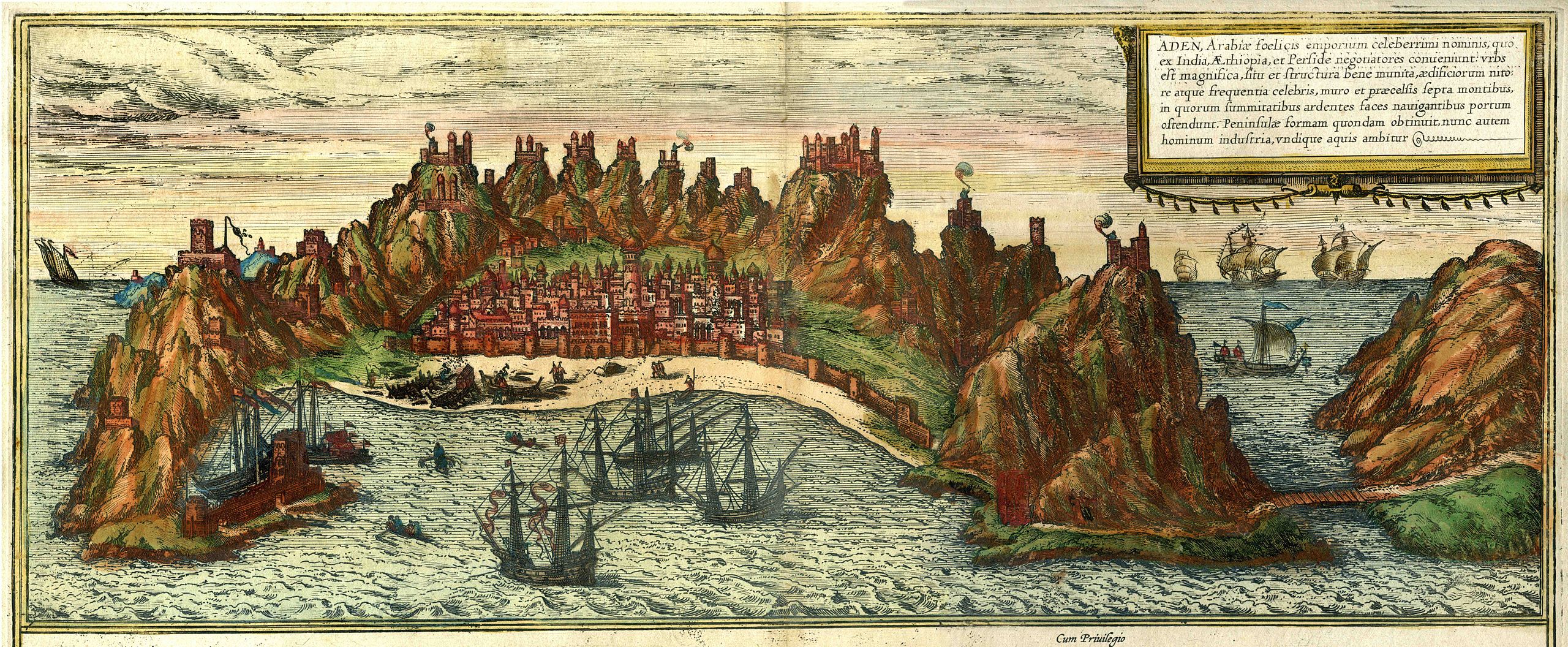
Image: Aden as portrayed in Georg Braun and Frans Hogenberg, Civitates Orbis Terrarum, vol. 1 (1572/1612)
This seminar surveys the geography and political economy of port cities of the western Indian Ocean between the 13th and late 15th centuries and discusses chronology and changes over time. Using archaeological and other material evidence and textual sources, it then focuses on the histories of Aden, Hormuz and Cambay for what they reveal about trade and society and the relationship between local and regional history and global connectivites in the “Age of the Mamluks.”
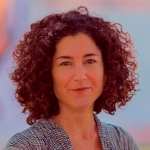 Roxani Eleni Margariti is Associate Professor at Emory University’s Department of Middle Eastern and South Asian Studies. She specializes in maritime histories and material culture of the Middle East and the western Indian Ocean. She is the author of Aden and the Indian Ocean Trade: 150 Years in the Life of a Medieval Arabian Port (University of North Carolina Press, 2007) and co-editor of two volumes on the economic and social history of the medieval Middle East. Her current work focuses on the biography of the Dahlak Archipelago in the Red Sea in medieval and early modern times
Roxani Eleni Margariti is Associate Professor at Emory University’s Department of Middle Eastern and South Asian Studies. She specializes in maritime histories and material culture of the Middle East and the western Indian Ocean. She is the author of Aden and the Indian Ocean Trade: 150 Years in the Life of a Medieval Arabian Port (University of North Carolina Press, 2007) and co-editor of two volumes on the economic and social history of the medieval Middle East. Her current work focuses on the biography of the Dahlak Archipelago in the Red Sea in medieval and early modern times
February 10, 2022
6:30 - 8:30 PM IST
Registrations Closed
Splendour and Might: The World of Mamluk Manuscripts

Image: British Library Add. MS 59874 - Baybars al-Jashnakir Q MS
This talk will be an exciting journey in the world of the written book of the Mamluks from the late 13th to the early 16th centuries. Such magnificent manuscripts will be surveyed as a product of a vibrant intellectual life of their era. From Qur’an manuscripts, hadith encyclopedias, and poetry to veterinary manuals, the journey will be a comprehensive one highlighting the immense value of this written culture and its cosmopolitanism.
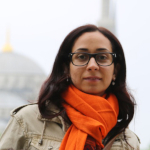 Noha Abou-Khatwa is Adjunct Assistant Professor of Islamic Art and Architecture at at American University in Cairo. Her main research interests are the manuscript culture and architecture of the Medieval Muslim world, with a focus on the Mamluks. She earned her PhD from University of Toronto in Islamic Art and Material Culture, writing a dissertation on “Calligraphers, Illuminators and Patrons: Mamluk Qur’an Manuscripts from 1341-1412 AD in light of the collection of the National Library of Egypt.” Prior to joining the University of Toronto, she worked at the Thesaurus Islamicus Foundation, where she started and directed until 2006 The Dar al-Kutub Manuscript Conservation Project. She also founded the Islamic Art Network, which was created to aid researchers and scholars in the field. She publishes on epigraphy, calligraphy and Qur’an manuscripts.
Noha Abou-Khatwa is Adjunct Assistant Professor of Islamic Art and Architecture at at American University in Cairo. Her main research interests are the manuscript culture and architecture of the Medieval Muslim world, with a focus on the Mamluks. She earned her PhD from University of Toronto in Islamic Art and Material Culture, writing a dissertation on “Calligraphers, Illuminators and Patrons: Mamluk Qur’an Manuscripts from 1341-1412 AD in light of the collection of the National Library of Egypt.” Prior to joining the University of Toronto, she worked at the Thesaurus Islamicus Foundation, where she started and directed until 2006 The Dar al-Kutub Manuscript Conservation Project. She also founded the Islamic Art Network, which was created to aid researchers and scholars in the field. She publishes on epigraphy, calligraphy and Qur’an manuscripts.
February 17, 2022
6:30 - 8:30 PM IST
Registrations Closed
Judging a Book by its Cover: An Introduction to The Ornament and Techniques used to Decorate Mamluk Bindings

Image: Doublure,The Museum of Turkish and Islamic Arts, Istanbul, Ms.508
This paper traces the development of bookbinding techniques and decoration throughout the Mamluk period 650-922/1250-1516. It examines bindings that can be dateable by the colophon of the manuscripts, waqf inscriptions or dedications to a patron’s library they contain.
From this a picture emerges of a vibrant and dynamic binding tradition that drew on a variety of sources for its inspiration. The bindings of the 14th and early 15th century are decorated with geometrical patterns of measured complexity, which continue to be developed until the end of the Mamluk period and are reflected in architectural decoration and other media. In the late 15th century, changes in both ornament and technique began to occur which are incorporated into the Mamluk binders’ repertoire reflecting developments that are noted on Persian bindings of the early 15th century. It was these designs along with pasteboard covers and gold tooling that the Italian binders of the Renaissance adopted and adapted, producing smaller and lighter books in leather bindings with gold-tooled decoration.
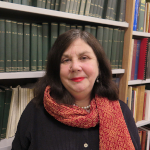 Alison Ohta is the Director of the Royal Asiatic Society of Great Britain and Ireland. She completed her doctoral thesis at SOAS, University of London on bindings of the Mamluk period (1250-1516). She has lectured and published widely on the subject and her recent publications include:
Alison Ohta is the Director of the Royal Asiatic Society of Great Britain and Ireland. She completed her doctoral thesis at SOAS, University of London on bindings of the Mamluk period (1250-1516). She has lectured and published widely on the subject and her recent publications include:
‘Looking inside the Book: Doublures of the Mamluk Period’, The Making of Islamic Art, Studies in Honour of Sheila Blair and Jonathan Bloom, Edinburgh University Press, 2021, pp.184-207 and forthcoming ‘Mamluk Qur’ans: Splendour and Opulence of the Islamic Book’, Proceedings of the Qur’an Symposium, December 2017 at the Freer and Sackler Galleries, Smithsonian, Washington.
February 24, 2022
6:30 - 8:30 PM IST
Registrations Closed
Mamluk Metalwork: Styles and Statements

Image: Detail of Basin, V&A Museum
Metalwork from the Mamluk period (1250-1517) belong to the highlights of Islamic art. The lecture will show the splendor of princely silver-inlaid brass objects and discuss the ceremonial and political significance of their imagery and inscriptions. It will also present objects of more common use and discuss the significance of their inscriptions. The presentation will also follow the evolution of this art during this period.
 Doris Behrens-Abouseif, is Professor (emerita), SOAS, University of London. From 2000-2014 she held the Nasser D Khalili Chair of Islamic Art and Archaeology at SOAS. Her list of publications covers a wide range of subjects from the early period to the 19th century with focus on Egypt and Syria: history of Islamic architecture and urbanism, cultural history, concepts of aesthetics, material culture and the decorative arts
Doris Behrens-Abouseif, is Professor (emerita), SOAS, University of London. From 2000-2014 she held the Nasser D Khalili Chair of Islamic Art and Archaeology at SOAS. Her list of publications covers a wide range of subjects from the early period to the 19th century with focus on Egypt and Syria: history of Islamic architecture and urbanism, cultural history, concepts of aesthetics, material culture and the decorative arts
March 3, 2022
6:30 - 8:30 PM IST
Registrations Closed
Glazed Tiles under the Mamluks, their Origins and Successors

Image: By Arthur Millner
The wide variety of ceramics produced in Egypt and Syria under the Mamluk rulers (1250-1517) at first mostly consisted of vessels, but the beginning of the 15th century saw a sudden profusion of glazed tiles, mostly in a distinctive blue and white palette. In this lecture we will consider their origins, designs and context, as well as their kinship with tiles produced in Ottoman Europe, Iran and even in the Indian Subcontinent.
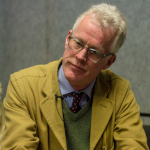 Arthur Millner is a consultant in Islamic, Indian, Himalayan and South-East Asian art, based in London. He studied at Queens’ College, Cambridge and SOAS, University of London. He started his career at Sotheby’s and later had a gallery in London. He has spent the last fifteen years working independently advising collectors and auction rooms, as well as lecturing and writing. He has written two books: Damascus Tiles (2015) and, most recently, Indian Tiles (2021).
Arthur Millner is a consultant in Islamic, Indian, Himalayan and South-East Asian art, based in London. He studied at Queens’ College, Cambridge and SOAS, University of London. He started his career at Sotheby’s and later had a gallery in London. He has spent the last fifteen years working independently advising collectors and auction rooms, as well as lecturing and writing. He has written two books: Damascus Tiles (2015) and, most recently, Indian Tiles (2021).
March 10, 2022
6:30 - 8:30 PM IST
Registrations Closed
Enamelled and Gilded Glass from Syria and Egypt

Image: Enamelled and gilded glass beaker decorated with curling tendrils and leaves. is known as the ‘Luck of Edenhall’, a name that reflects its history after it had reached England in the 15th century, when a finely decorated leather case was made to contain it. Syria, c. 1250-1300. London, Victoria & Albert Museum, C.1-1959.
The application of coloured glass enamels to blown glass objects was a highly-skilled and lengthy process perfected during the thirteenth and fourteenth centuries in Egypt and Syria. The highly-decorated pieces were in great demand by the Mamluk elite: enamelled and gilded objects, many of them mosque lamps, were commissioned by those attached to the court, while bottles and beakers were brought back to Europe and kept in in church treasuries and the private collections of the aristocracy.
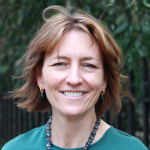 Dr. Melanie Gibson is Editor of the Gingko Art Series and was formerly head of Art History at New College of the Humanities, London. Since 2005 she has lectured on the ceramics and glass of the Islamic world for SOAS, University of London, The Courtauld Institute, The Aga Khan University, the Victoria & Albert Museum and Leighton House in London. Her research specialises in the ceramics and glass of the Islamic world and the use of Islamic design in nineteenth-century interior decoration.
Dr. Melanie Gibson is Editor of the Gingko Art Series and was formerly head of Art History at New College of the Humanities, London. Since 2005 she has lectured on the ceramics and glass of the Islamic world for SOAS, University of London, The Courtauld Institute, The Aga Khan University, the Victoria & Albert Museum and Leighton House in London. Her research specialises in the ceramics and glass of the Islamic world and the use of Islamic design in nineteenth-century interior decoration.
March 17, 2022
6:30 - 8:30 PM IST
Registrations Closed